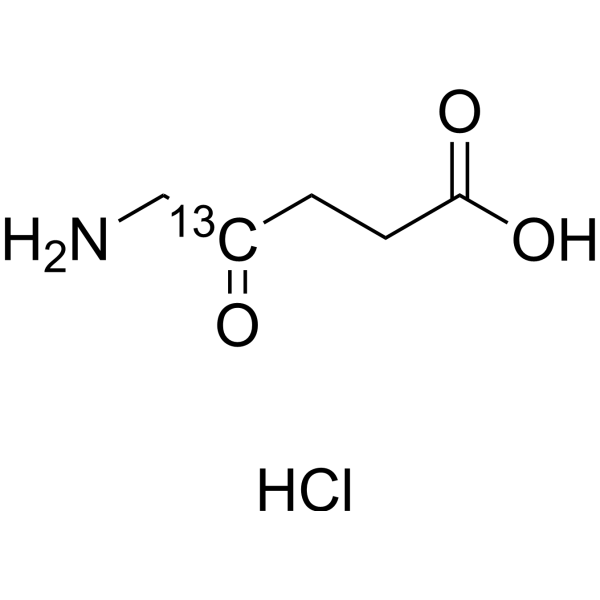5-Aminolevulinic acid-4-13C hydrochloride
Modify Date: 2024-01-11 07:25:45

5-Aminolevulinic acid-4-13C hydrochloride structure
|
Common Name | 5-Aminolevulinic acid-4-13C hydrochloride | ||
|---|---|---|---|---|
| CAS Number | 129720-94-1 | Molecular Weight | 168.58 | |
| Density | N/A | Boiling Point | N/A | |
| Molecular Formula | C413CH10ClNO3 | Melting Point | N/A | |
| MSDS | N/A | Flash Point | N/A | |
Use of 5-Aminolevulinic acid-4-13C hydrochloride5-Aminolevulinic acid-4-13C (hydrochloride) is the 13C labeled 5-Aminolevulinic acid hydrochloride[1]. 5-Aminolevulinic acid hydrochloride (5-ALA hydrochloride) is an intermediate in heme biosynthesis in the body and the universal precursor of tetrapyrroles[2][3]. |
| Name | 5-Aminolevulinic acid-4-13C hydrochloride |
|---|
| Description | 5-Aminolevulinic acid-4-13C (hydrochloride) is the 13C labeled 5-Aminolevulinic acid hydrochloride[1]. 5-Aminolevulinic acid hydrochloride (5-ALA hydrochloride) is an intermediate in heme biosynthesis in the body and the universal precursor of tetrapyrroles[2][3]. |
|---|---|
| Related Catalog | |
| In Vitro | Stable heavy isotopes of hydrogen, carbon, and other elements have been incorporated into drug molecules, largely as tracers for quantitation during the drug development process. Deuteration has gained attention because of its potential to affect the pharmacokinetic and metabolic profiles of drugs[1]. |
| References |
| Molecular Formula | C413CH10ClNO3 |
|---|---|
| Molecular Weight | 168.58 |